Bringing a product to life from its initial idea to final delivery requires far more than just great design. With growing market pressures, global teams, and stringent compliance standards, businesses need a centralized system to manage every stage of the product lifecycle. This is where Product Lifecycle Management software proves essential.
PLM tools help streamline development, reduce errors, and enhance cross-functional collaboration across engineering, manufacturing, and supply chain operations. They’re especially vital in complex industries like automotive, aerospace, and electronics.
Modern PLM platforms now offer more than just data management, they support digital twins, IoT integration, and real-time decision-making across the lifecycle. Choosing the right one can significantly impact product speed, cost, and quality.
Below, we dive into the 15 best PLM software solutions, with detailed insights, key features, deployment options, and ideal use cases.
What is PLM Software?
Product Lifecycle Management (PLM) software centralizes and streamlines all the processes involved in bringing a product to market — from the initial idea to design, development, manufacturing, maintenance, and disposal.
It provides a digital thread connecting:
- Design & Engineering
- Supply Chain & Procurement
- Manufacturing & Quality
- Compliance & Lifecycle Governance
PLM systems reduce time-to-market, eliminate costly errors, and improve collaboration across teams and global suppliers.
Key Features to Look for in a PLM Platform
When evaluating a PLM system, prioritize tools that offer:
- Multi-CAD support and file versioning
- BOM (Bill of Materials) management
- Change and revision control workflows
- Compliance and audit trails
- Collaboration tools for suppliers and cross-functional teams
- Integration with ERP, CRM, and MES tools
List of 15 Best Product Lifecycle Management Software
1. Siemens Teamcenter
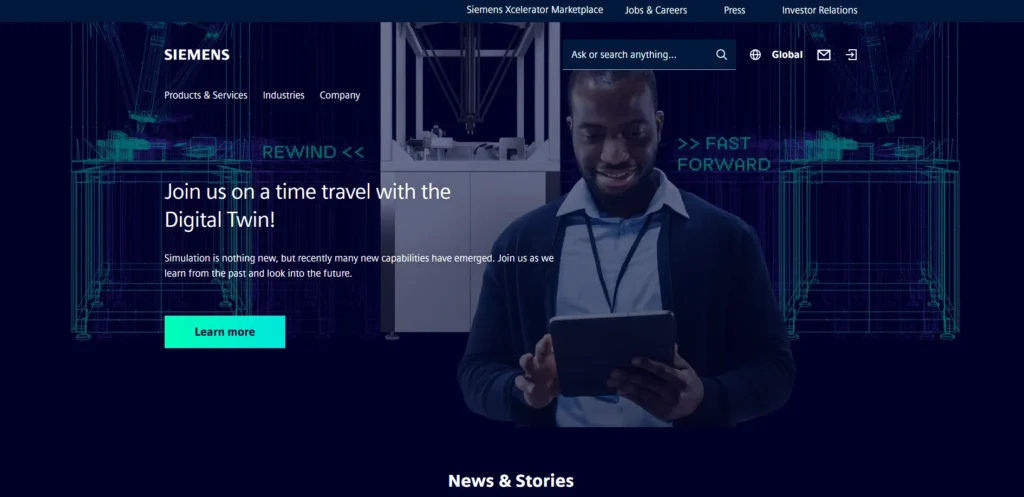
Website: https://www.siemens.com/
Siemens Teamcenter is one of the most robust and widely adopted PLM platforms in the world. Built for enterprise-scale operations, it provides end-to-end lifecycle visibility from product concept to decommission. It supports multi‑CAD environments and integrates tightly with Siemens’ NX software, making it a go‑to solution in industries like aerospace, automotive, and industrial manufacturing.
For entrepreneurs exploring manufacturing business ideas, Teamcenter offers a scalable foundation to manage complex product data, ensure compliance, and bring innovations to market efficiently. With comprehensive BOM structuring, digital twin capabilities, and deep workflow automation, it empowers global teams to stay coordinated and competitive.
Key Features:
- Centralized product data and change management
- Multi‑CAD and CAE integration
- Digital twin and simulation support
- End‑to‑end workflow automation
- Scalable for global deployments
Best For: Large enterprises in engineering‑intensive sectors like aerospace and automotive.
Deployment: Cloud, On‑premise, or Hybrid
2. PTC Windchill

Website: https://www.ptc.com/en/products/windchill
PTC Windchill is a high-performance PLM suite focused on collaboration, data governance, and connected products. Designed to support large-scale manufacturers and IoT-driven development, it offers real-time analytics and revision control across BOMs and product structures.
Its close integration with PTC Creo and ThingWorx enables engineering teams to embed smart features and digital twin capabilities directly from design to delivery. Windchill’s secure architecture and modular setup make it a trusted choice for industries demanding rigorous quality standards and audit trails.
Key Features:
- Real‑time BOM and product structure management
- ThingWorx and IoT integration
- Tight CAD system connectivity (Creo, others)
- Secure governance and revision tracking
- Analytics dashboards for lifecycle insights
Best For: Enterprises and large-scale engineering firms developing connected products and digital systems.
Deployment: Cloud or On‑premise
3. Autodesk Fusion Lifecycle
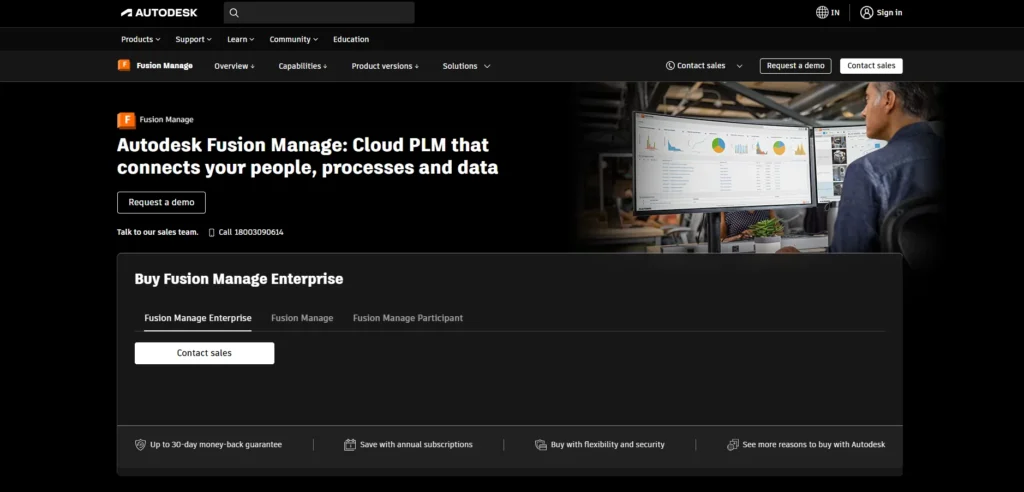
Website: https://www.autodesk.com/in/products/fusion-manage/overview
Autodesk Fusion Lifecycle is a cloud-native PLM platform engineered for speed, ease of use, and affordability. Tailored for mid-market manufacturers, it simplifies engineering change management, BOM approvals, and quality tracking through prebuilt workflow templates.
The platform’s native integration with Autodesk tools like Inventor and Fusion 360 enables seamless design-to-manufacturing collaboration. Its intuitive, web-based interface, combined with mobile access, ensures teams can manage revision control and supplier collaboration anywhere, without IT overhead.
Key Features:
- Prebuilt change, quality, and BOM workflows
- Tight integration with Autodesk CAD tools
- Mobile and web-based access
- No IT infrastructure required
- Rapid implementation and onboarding
Best For: Small-to-mid-sized manufacturers leveraging Autodesk CAD tools who want fast ROI.
Deployment: Cloud
4. Dassault Systèmes ENOVIA
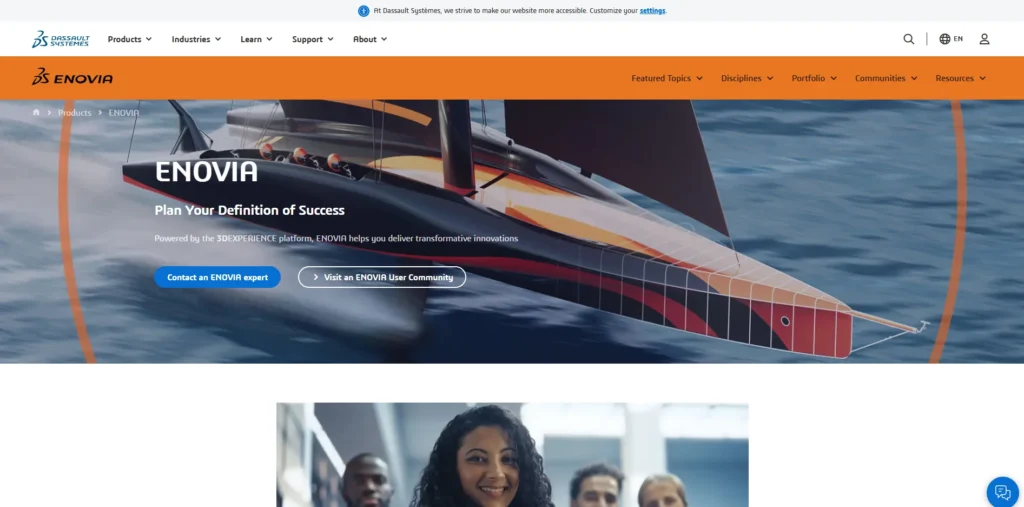
Website: https://www.3ds.com/products/enovia
ENOVIA is Dassault Systèmes’ enterprise-grade PLM solution within the 3DEXPERIENCE platform, characterized by strong collaboration and governance capabilities. It enables variant management, project control, and compliance workflows across global design and engineering teams.
Integration with CATIA, DELMIA, and SIMULIA provides seamless data continuity from design through simulation and manufacturing. ENOVIA excels in handling high-complexity industries like aerospace or automotive by offering real-time dashboards, audit traceability, and cross-functional alignment.
Key Features:
- Global collaboration and variant configuration
- Native integration with CATIA and SIMULIA
- Project and change governance
- Compliance tracking & audit logs
- Dashboard-driven lifecycle analytics
Best For: Large-scale organizations requiring rigorous product control across engineering-intensive industries.
Deployment: Cloud or On‑premise
5. Arena PLM (by PTC)
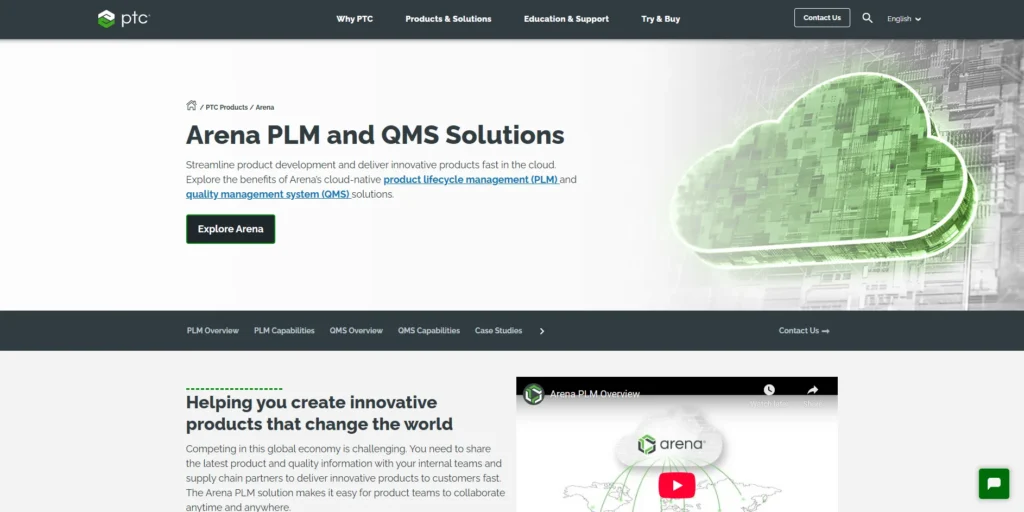
Website: https://www.ptc.com/en/products/arena
Arena PLM is a cloud-native solution blending PLM and QMS, built especially for regulated industries like medical devices and electronics. It centralizes engineering change orders, document revisions, supplier data, and quality records in a unified portal.
Its preconfigured compliance workflows—like CAPA, audit-trail tracking, and FDA alignment—ensure regulatory readiness out of the box. Arena’s modern UI and fast implementation make it ideal for teams launching or scaling hardware products with minimal overhead and maximum compliance assurance.
Key Features:
- Unified PLM + QMS platform
- Built-in compliance workflows (CAPA, FDA)
- Supplier and quality record integration
- Document and model version control
- Intuitive interface with rapid deployment
Best For: Medical device, aerospace, and electronics teams focused on quality and compliance in product development.
Deployment: Cloud
6. Oracle Cloud PLM
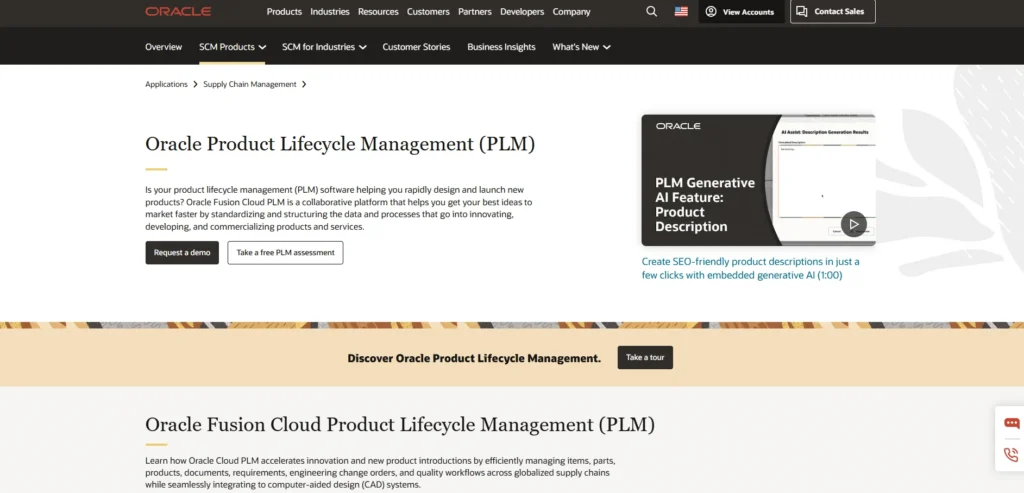
Website: https://www.oracle.com/scm/product-lifecycle-management/
Oracle Cloud PLM offers a fully integrated product lifecycle platform within Oracle’s broader SCM and ERP ecosystem. It facilitates end-to-end management of innovation processes, engineering changes, and cost control within a unified cloud environment. The solution includes AI-enhanced analytics for compliance tracking, cost forecasting, and supplier collaboration.
Especially beneficial for organizations already entrenched in Oracle’s cloud stack, it supports global visibility, fast onboarding, and process standardization across geographically distributed teams.
Key Features:
- Innovation and change pipeline management
- AI-powered analytics and forecasting
- Deep ERP and SCM integration
- Supplier and cost governance
- Global product data connectivity
Best For: Companies leveraging Oracle Cloud for SCM and ERP, seeking tightly integrated lifecycle control.
Deployment: Cloud
7. Aras Innovator
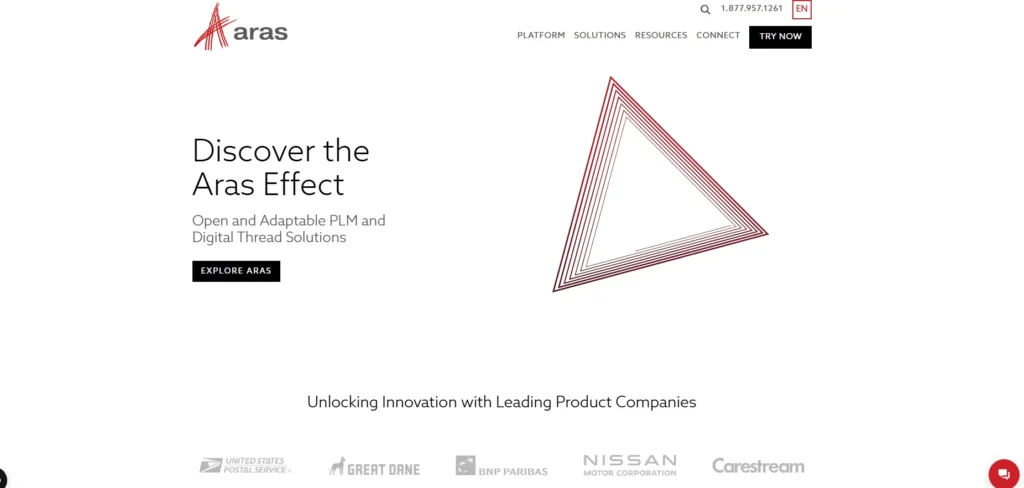
Website: https://www.aras.com
Aras Innovator presents a highly flexible, low-code PLM environment favored by enterprises with continuously evolving product processes. Rather than rigid templates, it offers an open architecture that adapts to changing engineering structures, compliance frameworks, and digital twin modeling.
Aras supports full lifecycle traceability, configurable workflows, and enterprise scalability without high upgrade costs. Its cloud or on-premise deployment ensures data residency, while its large customer base in aerospace and defense testifies to its reliability in complex product ecosystems.
Key Features:
- Low‑code, open architecture
- Digital twin and configuration management
- Flexible change and BOM workflows
- No-cost core platform updates
- Scalable across global sites
Best For: Organizations needing a customizable PLM platform that adapts over time, especially in regulated, high-complexity industries.
Deployment: Cloud or On‑premise
8. SAP PLM
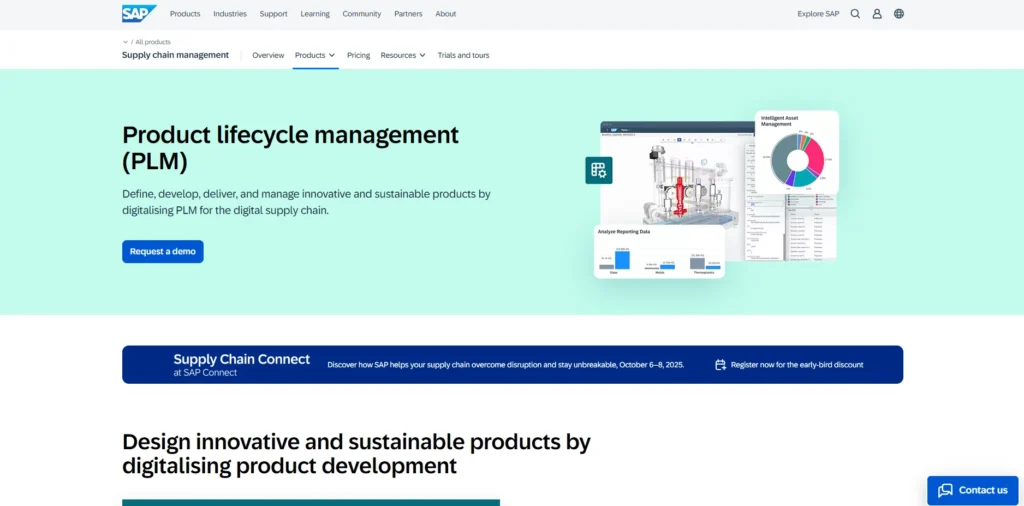
Website: https://www.sap.com/india/products/scm/plm-r-d-engineering.html
SAP PLM delivers unified product lifecycle management fully integrated with the SAP S/4HANA ERP system. It enables seamless coordination between engineering, procurement, manufacturing, and compliance stakeholders. As part of SAP’s broader Supply Chain Management Software ecosystem, SAP PLM manages product specifications, revisions, quality records, and document control within one enterprise-wide system.
Organizations benefit from instant traceability, regulatory workflows, and analytics embedded across SAP’s platforms. Its ability to align with global supply chains and operational data makes it essential for large-scale deployments.
Key Features:
- Tight integration with SAP ERP modules
- End-to-end BOM and documentation workflows
- Built-in quality and compliance control
- Real-time analytics and visibility
- Global product coordination
Best For: Enterprise environments looking to consolidate PLM and ERP within SAP infrastructure, especially in regulated sectors.
Deployment: On‑premise or SaaS (via S/4HANA Cloud)
9. Propel PLM
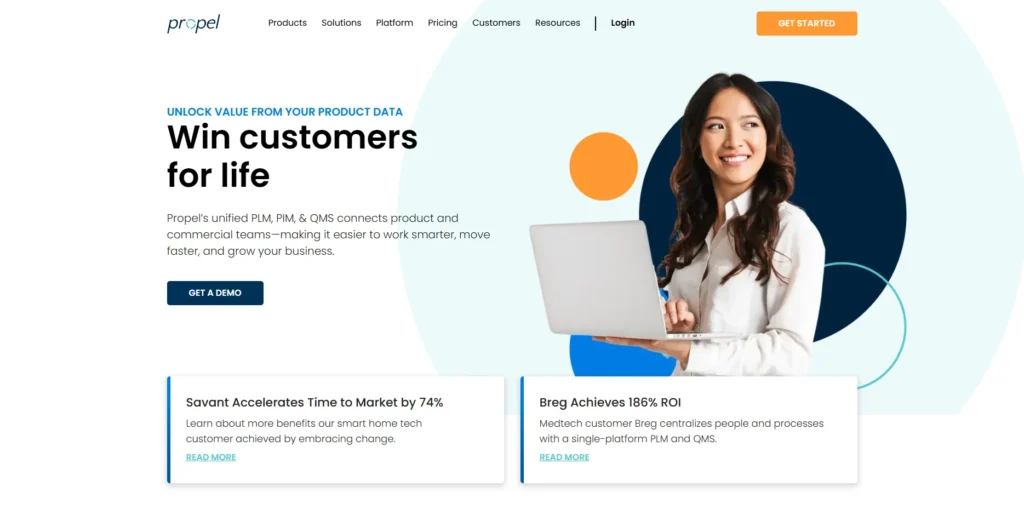
Website: https://www.propelsoftware.com/
Propel PLM is designed on the Salesforce platform, delivering PLM alongside CRM software, QMS, and customer service data. It breaks down silos between product, quality, and commercial teams by enabling unified workflows within one integrated cloud system. Propel’s drag-and-drop configuration and modular workflows support rapid adaptation to market or process changes.
It integrates smoothly with Salesforce apps, e-commerce platforms, and ERP systems. The result is a cohesive product governance environment with full transparency across teams.
Key Features:
- Native Salesforce integration
- PLM + QMS + CRM in one ecosystem
- Low-code configuration for workflows
- Real-time collaboration across teams
- API connectivity with ERP/e-commerce tools
Best For: Companies already on Salesforce looking for unified product governance with seamless CRM integration.
Deployment: Cloud (Salesforce-native)
10. Centric PLM
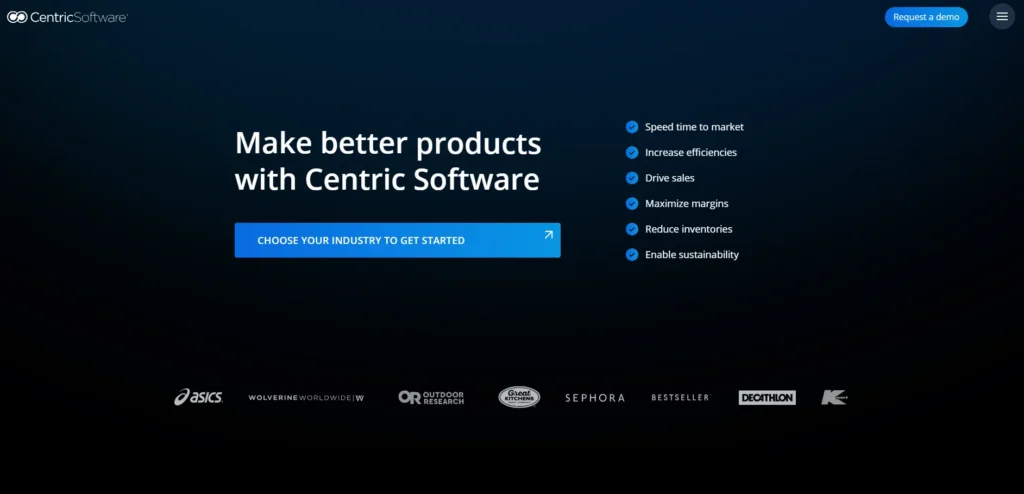
Website: https://www.centricsoftware.com
Centric PLM is purpose-built for fast-moving consumer goods, fashion, retail, and home décor companies. It helps brands manage design cycles, supplier sourcing, cost planning, and seasonal SKU launches with agility. The platform supports visual line planning, vendor collaboration portals, and quality control dashboards tailored to brand workflows.
AI-enabled features help forecast demand and streamline time-to-market. Its mobile and desktop UI empowers global teams to collaborate during rapid product turnover cycles.
Key Features:
- Line planning and seasonal product workflows
- Supplier sourcing and cost management
- Mobile-enabled design and review tools
- Quality and compliance records
- AI forecasting and trend tracking
Best For: Fashion, apparel, retail, and consumer goods brands with rapid design and sourcing cycles.
Deployment: Cloud
11. OpenBOM
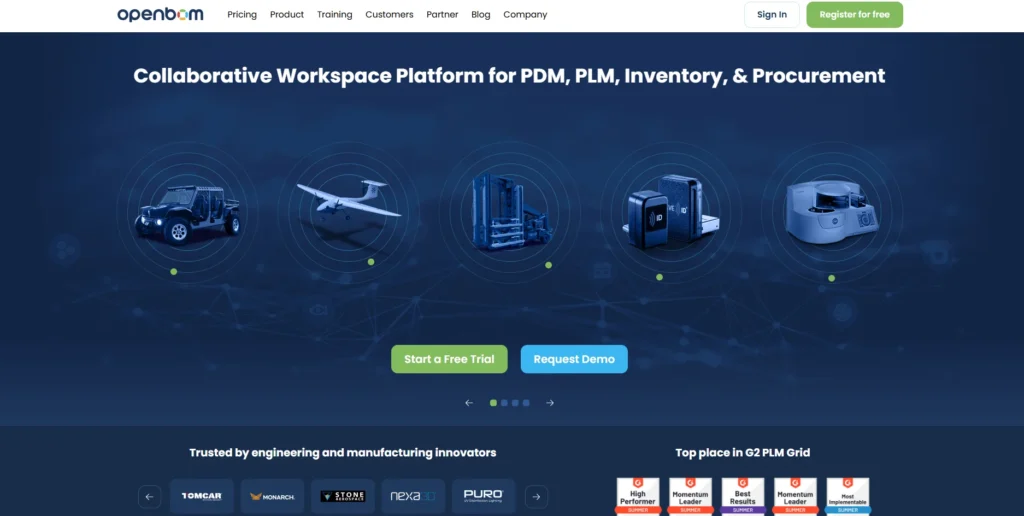
Website: https://www.openbom.com
OpenBOM is a lightweight, cloud-based BOM and product data collaboration platform aimed at lean engineering teams and startups. Seamless integrations with CAD tools like SOLIDWORKS, Onshape, and Autodesk enable teams to build, update, and manage BOMs in real time. It features cost tracking, supplier data, and revision control without heavy onboarding or bureaucracy.
The pay-as-you-go pricing and browser-based interface allow quick setup and effective collaboration—ideal for teams that want structured data management without enterprise complexity.
Key Features:
- Real-time collaborative BOM editing
- CAD integrations and part lifecycle control
- Cost rollups and supplier tracking
- Revision history and version control
- Minimal setup, browser-based use
Best For: Small-to-mid-sized engineering teams and startups needing structured BOM workflows quickly.
Deployment: Cloud
12. Onshape
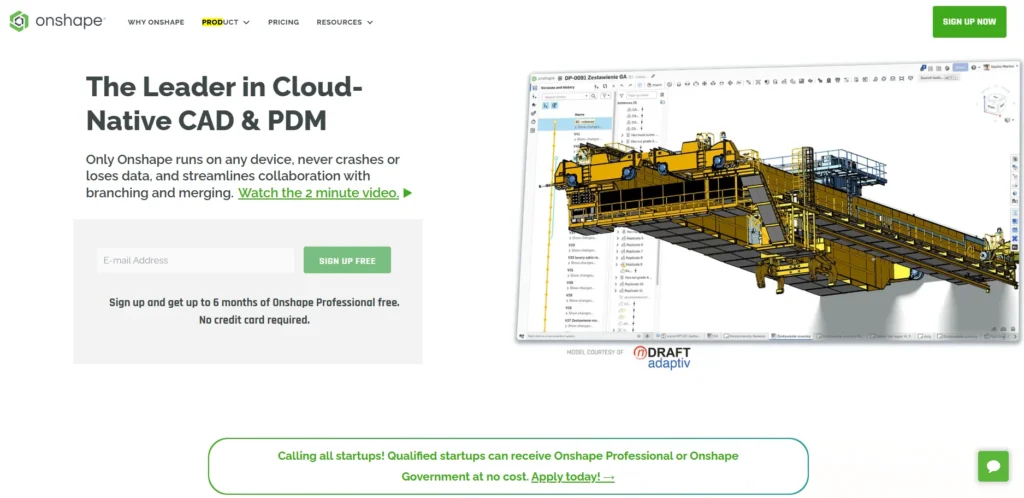
Website: https://www.onshape.com
Onshape is a full cloud-native CAD platform with built-in data management and light PLM functionality. It supports real-time, multi-user collaboration on design projects with automatic version control and release workflows embedded in the browser.
Onshape’s architecture eliminates file duplication, simplifies sharing, and ensures that product teams always have access to the latest design iteration. This makes it particularly strong for education settings, prototype environments, and hardware startups operating with tight cycles and frequent change.
Key Features:
- Integrated CAD and data management
- Real-time multi-user design collaboration
- Version control and release workflows
- Cloud-native, device-agnostic interface
- Simplified sharing and access control
Best For: Agile engineering teams and prototype-focused startups that need fast, collaborative CAD and BOM features.
Deployment: Cloud
13. Autodesk Vault

Website: https://www.autodesk.com
Autodesk Vault is a data management tool built specifically for engineering and design teams using Autodesk’s ecosystem like AutoCAD, Inventor, and Revit. It centralizes product data and improves collaboration across departments, enabling faster workflows and easier version control.
Vault Professional adds advanced capabilities like BOM management, change orders, and multi-site collaboration, making it suitable for mid-sized manufacturers and AEC firms looking to tighten control over their design processes.
Key Features:
- Seamless integration with Autodesk CAD software
- Automated data versioning and revision tracking
- Secure access control and permission settings
- Engineering change order (ECO) management
- Scalable options for enterprise use
Best For: Design and engineering teams working within the Autodesk ecosystem.
Deployment: On-premise or Cloud-connected
14. Duro PLM

Website: https://durolabs.co/
Duro is a modern PLM solution built for hardware product companies, particularly those operating in IoT, robotics, or embedded systems. It brings Git-style version control, integrated BOM management, and issue tracking into one unified, cloud-based platform.
With direct integration into tools like GitHub, Jira, and continuous-delivery workflows, Duro enables cohesive collaboration between firmware, electronics, and mechanical teams. Its real-time synchronization, revision control, and lightweight architecture make it ideal for startups and agile hardware teams.
Key Features:
- Git-style revision control and BOM versioning
- Integration with GitHub, Jira, and CI/CD tools
- Collaborative hardware design workflow
- Real-time change tracking and issue linking
- Cloud-native and modern interface
Best For: Hardware startups and agile product teams in robotics, IoT, and mixed-engineering domains.
Deployment: Cloud
15. Oracle Agile PLM
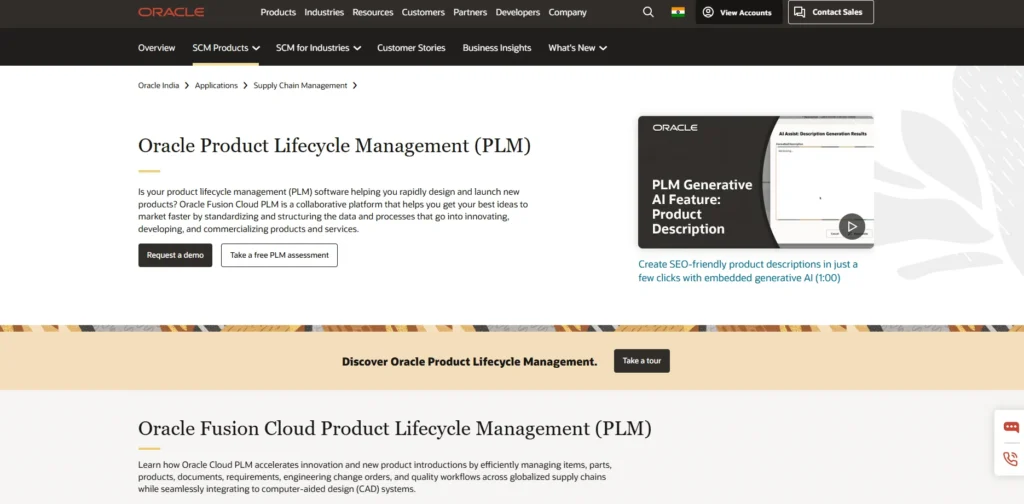
Website: https://www.oracle.com/in/scm/product-lifecycle-management/
Oracle Agile PLM is a legacy but still widely used enterprise platform that delivers robust BOM management, supplier quality control, and change governance. Many large manufacturers across the manufacturing and pharmaceutical sectors rely on it for its audited workflows, regulatory controls, and deep integration with Oracle ERP systems. Even though newer Oracle offerings exist, Agile PLM remains trusted due to its stability, extensive customization options, and proven track record in complex, process-intensive environments.
Key Features:
- Enterprise-grade BOM and change control
- Supplier quality and compliance workflows
- Deep integration with Oracle ERP systems
- Audit trails and process governance
- Highly configurable enterprise workflows
Best For: Large established enterprises with legacy Oracle infrastructure and strict regulatory oversight.
Deployment: On‑premise or Cloud (depending on modernization roadmaps)
How to Choose the Right PLM Software
- Start with your size & industry: SMBs should consider cloud-native tools like Arena or Propel. Enterprises may need Siemens, ENOVIA, or Windchill.
- Evaluate existing tech stack: Pick tools that integrate well with your current CAD, ERP, and QMS tools.
- Compliance needs: If you’re in medical, aerospace, or food — look for FDA/ISO/GxP support.
- Deployment preferences: SaaS tools are easier to roll out, while on-prem offers tighter control.
- Customization: Need heavy flexibility? Go for Aras or Oracle Agile.
Conclusion
Product lifecycle management software has become essential for businesses that want to design smarter, manufacture faster, and deliver better. From complex simulation-heavy industries to agile consumer brands, PLM software brings teams, data, and processes into harmony.
Whether you’re scaling your design team, launching a new product line, or managing compliance across geographies, one of these 15 PLM tools is built to handle it.
Choose wisely, and you won’t just build products, you’ll build a smarter product ecosystem.
FAQs
Q1. What is PLM software used for?
PLM software helps manage product data, development workflows, BOMs, and compliance throughout the product lifecycle from concept to retirement.
Q2. What’s the difference between PLM and ERP?
PLM manages product development and design, while ERP handles business operations like finance, inventory, and supply chain.
Q3. Is cloud-based PLM secure?
Yes, most cloud PLM tools use enterprise-grade encryption, access control, and uptime SLAs.
Q4. Do startups need PLM?
Yes, especially those developing hardware or regulated products. Tools like Arena or OpenBOM are affordable and scalable.
Q5. Which PLM tool is best for fashion brands?
Centric PLM is purpose-built for fashion, apparel, and consumer product businesses.

